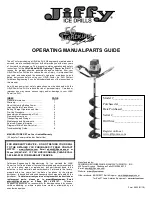
Chapter 12
Page no. 132
12-imgac.fm
GE Healthcare
Senographe DS Acquisition System
Revision 1
Operator Manual 5307907-3-S-1EN
Image Acquisition Procedure
7
Compression
To apply compression to the breast, depress the compression pedal. Manual adjustment can be made
using the two knobs, one located on each side of the compression paddle holder. Take great care with
patients with mammary implants. The compression force is displayed on the Gantry readout panel, and
can be displayed on the image as an annotation (see Chapter
).
The maximum compressive force available using motorized compression is 20 daN. Using manual com-
pression, the maximum force available is between 27 daN and 30 daN with the arm in the 0° position,
reducing to about 20 daN at 90°. An audible warning is given when the limit has been reached.
It is important to use adequate breast compression because the benefits in image quality and dose
reduction are significant:
•
Compression reduces motion blurring by immobilizing the breast.
•
Compression reduces geometric blurring by ensuring direct contact between the breast and the
image receptor and by spreading glandular breast tissue.
•
Compression improves subject contrast and reduces scattered radiation in proportion to the reduc-
tion in thickness of tissue irradiated.
•
Compression spreads the breast laterally, giving it a uniform and reduced thickness. This reduces
exposure and consequently the mean glandular dose.
Good compression is obtained when the compressed breast is taut to the touch.
When using the flexible compression paddle provided with your system, please use the collimator cen-
tering light after final compression is achieved and before acquiring the image, to verify that the chest
wall side of the paddle is not flexed into the field of view. If the paddle wall is observed in the FOV,
please reposition the patient so that her chest wall does not push the paddle wall forward. If that is not
possible, switch to the standard compression paddle.
Note:
As a safety measure, the compression system is designed to avoid having the paddle fall in the
event of power loss. If power loss occurs during an examination, the current compression force
remains applied to the compression paddle. Disengage the patient by lifting the paddle gently (do
not try to lift it quickly), using the manual compression knobs.
Note:
Automatic decompression can be programmed to occur when the exposure is terminated, so as to
minimize the time spent under compression by the patient. Refer to Chapter
, sec-
tion
3 X-ray Console setup menus on page 37
If automatic decompression is not enabled, decompress the patient after the exposure by press-
ing the compression release button
located at the lower right of the X-ray Console.
CAUTION
If a 2D localization paddle is being used, automatic decompression MUST BE DISABLED.
CAUTION
If the compression paddle is not present, take care to leave the space free between the
bottom of the paddle holder and the top of the image receptor assembly.
FOR
TRAINING
PURPOSES
ONLY!
NOTE:
Once
downloaded,
this
document
is
UNCONTROLLED,
and
therefore
may
not
be
the
latest
revision.
Always
confirm
revision
status
against
a
validated
source
(ie
CDL).
















































